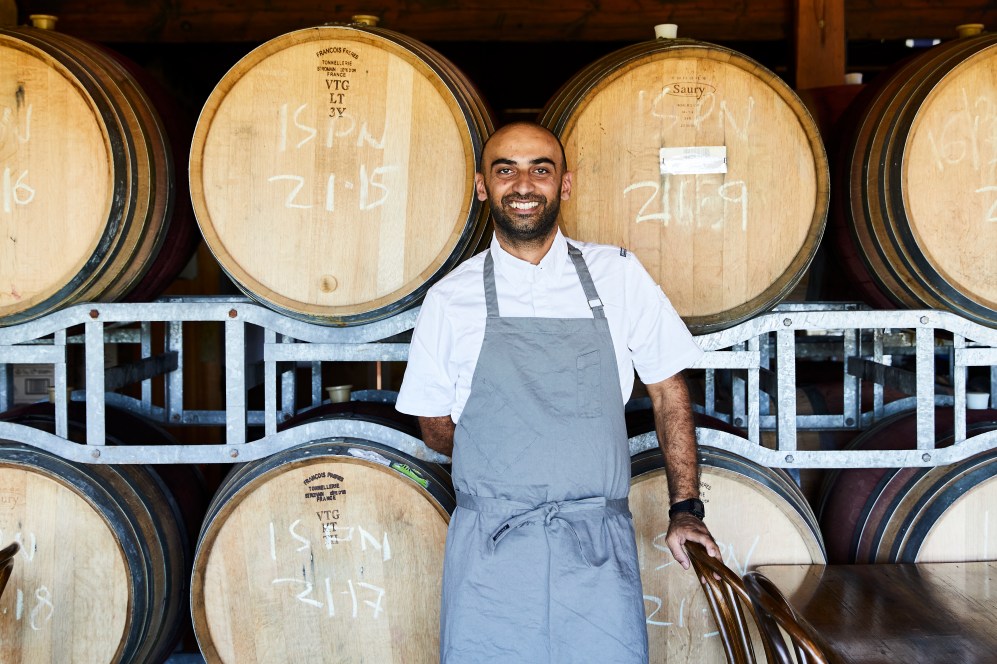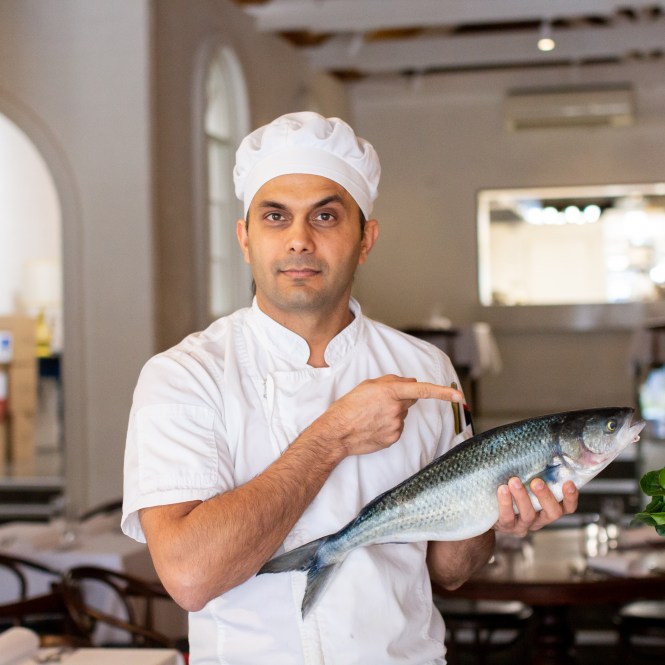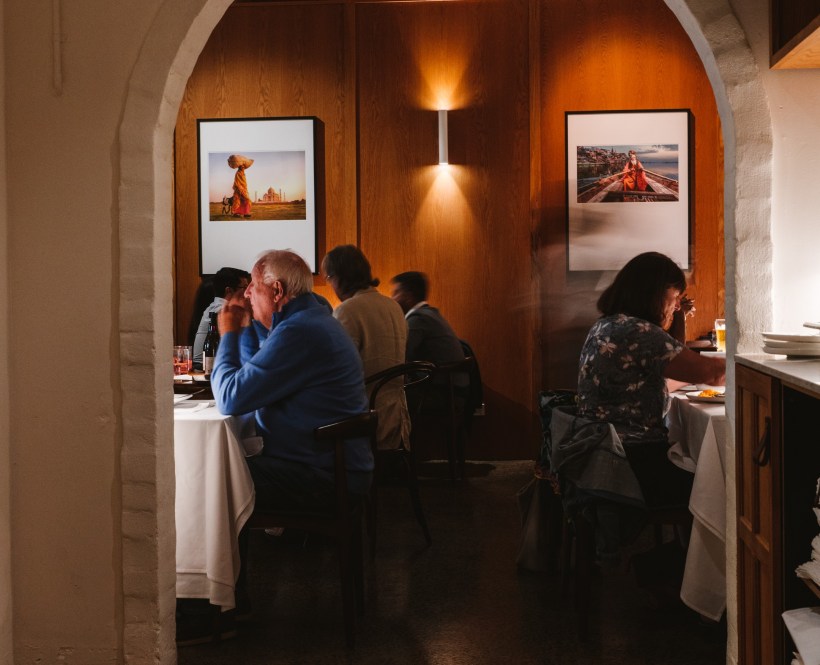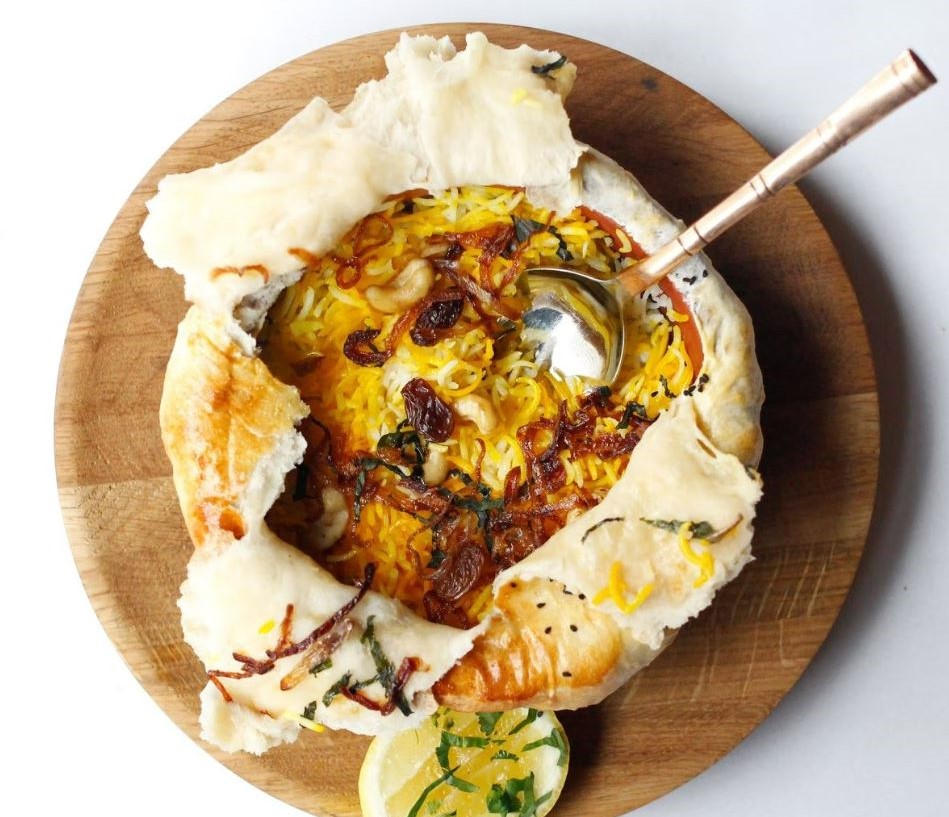Biryani is a mixed rice dish that is commonplace in India and has a longstanding history. Legend has it Mumtaz Mahal, the wife and queen of Mughal emperor Shah Jahan, requested chefs make a nutrition-boosting meal of meat and rice for malnourished soldiers on the battlefield. The royal kitchen added a combination of aromatic spices and saffron to the ingredients before firing it up in a large pot over an open flame.
Alternatively, some believe an early version of biryani was brought over to India by Turk-Mongol conqueror Timur in 1398. Whichever story you believe, biryani is a foundational dish across India and the Middle East. While the original will never lose its mainstay status, chefs can approach biryani with a number of approaches from switching up rice varieties to experimenting with different proteins and vegetables.
Hospitality talks to Atta’s Harry Dhanjal and Biji Dining Room’s Harry Mangat about spice combinations, key cooking techniques and its importance within Indian cuisine.
The word biryani comes from the Persian word birian, which translates to ‘fried before cooking’ and birinj which means ‘rice’. Head Chef and Owner of Atta Harry Dhanjal believes it is the most plausible point of origin. “If you go to any Iranian restaurant, biryani is one of the dishes that shines on the menu,” says the Melbourne-based chef. “Biryani came to India a few centuries back and was influenced by Mughals who came in and ruled India for thousands of years.”
Although biryani is not technically from India, the dish is a firm local favourite and a staple at celebratory events. “If you go to any wedding, it’s pretty much a given you find biryani, says Dhanjal. “It’s such an everyday thing; it’s not considered as a luxury or a once-in-a-while dish.”
Restaurants in parts of India focus on perfecting the dish, with families passing down recipes that have been preserved over generations. “If you go to cities like Hyderabad and Lucknow, there’s a biryani shop on every corner run by people who have had their restaurants for 300 to 400 years,” says Biji Dining Room’s Harry Mangat. “It’s not like they’ve just been cooking biriyani for a couple of years; they’ve been cooking it for the last 10 years [because] their grandfather or great grandfather started making it.”
Biryani is typically prepared in large quantities over a long period of time. “I feel it doesn’t taste that good when you make it in a small quantity; it needs to be for 100 people,” says Mangat. “It needs to cook for hours so each grain of rice has flavour.”

Different regions in India have created their own adaptations of biriyani over time, each with their own unique markers and varying spice levels. “There are two dominating biryani flavours: Lucknowi biryani comes from the northern side of India and Hyderabadi biryani is from the south of India,” says Dhanjal. “Hyderabadi biryani is spicier and more pungent because it’s got a lot of chilli in it. It’s basically how South Indian food normally is anyways. Lucknowi biryani has more dried fruit, a lot of saffron and yoghurt; it’s very aromatic.”
At Atta, Dhanjal makes a biryani that is halfway between the two and maintains a happy medium when it comes to spice. “We’ve gone a hybrid way wherewe arerespecting Australian palates,” he says. “Not making it too spicy, which is more towards the Lucknowi biryani, but also not too sweet at the same time.”
Mangat doesn’t often make traditional biryani at his Melbourne restaurant, preferring to cook the dish at home. But the chef has created a contemporary dish that takes cues from the flavours of biryani. “I made a biryani rice cake with slow-cooked lamb neck served with raita on the side, pickled daikon and fermented chillies,” says the chef. “The flavours of biryani are in the rice cake, which I pan fried to make crispy, but was still nice and gooey inside.”
Biryani can be cooked one of two ways pakki or kacchi: kacchi biryani is cooked from raw ingredients while pakki is made from pre-cooked and parboiled ingredients. “When you’re running a restaurant, pakki biryani is easy to deliver,” says Dhanjal. “Does it make a big difference taste-wise? Personally, I don’t think so; it’s just a method of cooking and it’s what we do.”

Basmati rice is parboiled and selected for its integrity during the cooking process. Dhanjal opts for India Gate Premium basmati rice because “it’s long, light and has less starchiness to it”, says the chef. “Basmati by nature is not a sticky rice; you can count the number of grains. But it has enough starchiness to bind whatever meat you’re using.”
The rice is cooked 70 to 80 per cent of the way before it’s taken off the heat. “It has to be al dente,” says Mangat, “if you overcook it, you won’t get a fluffy biryani.”
The overall profile of a biryani is determined by the spice combinations found in the dish. Atta makes garam masala in-house, which is used in a range of dishes at the restaurant. “Garam masala is made up of spices that are pungent and those that are aromatic and have sweeter notes,” says Dhanjal. “There’s green cardamom and black cardamom; green is sweeter and black is on the pungent side. Then you’ve got cloves, white pepper, black pepper and dehydrated flowers for aroma.”
Dhanjal also adds fresh green and red chillis using a ratio of 80 per cent green to 20 per cent red. Kashmiri chilli is another addition that complements the rest of the spices. “Kashmiri chilli has a tendency of oozing out a red colour and it makes the dish more colourful,” says Dhanjal.
Mellow spices can also be used to create a sweeter flavour, with Mangat using what he refers to as “warm spices”. The chef blends cinnamon, cardamom, cumin, coriander, black pepper, white pepper and Kashmiri chilli together. “I definitely like it milder because you can taste everything and the flavour of the basmati rice,” he says. “For me, spices are more to complement a dish, meat or vegetable; it’s not about overpowering anything.”
The remaining ingredients, such as proteins and vegetables, are cooked a little more than halfway before they are added to the pot. “I make a spice mix and rub that into the meat with a bit of yoghurt and usually marinate overnight,” says Mangat. “I then cook the meat, which adds a lot of flavour.”
Traditionally, biryani is cooked in a large pot over hot coals, but most dishes made in a kitchen setting are cooked on a stovetop or in an oven. The rice, meat, spices and toppings are arranged in layers before cooking. “I start with a bit of meat and then rice because it’ll stick at the bottom and give off moisture,” says Mangat. “Then I add fried onions, vegetables and keep [building] layers, sprinkling a bit of water on each. I cook it on a really low heat, leaving it for 20 minutes or so.”
Cooking times vary depending on portion size. Atta’s biryani serves two people, with each clay pot making 500-600 grams. Smaller portions mean layering isn’t necessary, with Dhanjal cooking all the ingredients in a pan with a tomato and onion mixture. “The ratio of onion and tomato gravy compared to a normal curry is very small because the whole dish can’t be sloppy,” says the chef. “We reduce the curry and then we add the rice, saffron and dried fruit and mix it up in the pan.”

The restaurant uses a cooking technique called dum which is an abbreviation for the Persian word dumpukht, meaning ‘air cooked’. “The opening at the top of the clay pot is sealed by naan dough and the whole thing goes into the tandoor oven,” says Dhanjal, who lets the pots cook for five to seven minutes. “The rice gets steamed, but the steam can’t escape, so it cooks the chicken or the lamb so they have bite.”
There are many different avenues to take when it comes to making biryani from switching out everything from proteins to spices, vegetables and breads. “You can add anything; it doesn’t have to be meat, it can just be potatoes,” says Mangat. “You can get fancy with it and add a pastry on top, which is called parda biryani. I heard somewhere that India is a country of countries and you find new things in every place. It’s amazing one country has so many different variations of biryani.”

